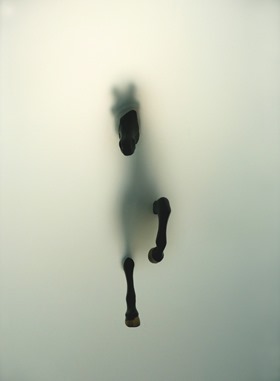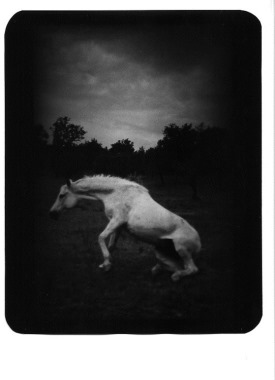The origin of modern day photography can be traced to the 1800’s. It is during this period that the first book was published with photographic illustrations used to gather scientific record of natural objects. Photograms as they are now known were the initial pictures produced on photosensitive material without a camera. After the invention of cameras photograms were reinvented as beautiful art presentations. To this day artists have used this picture making technique to form exquisite art works. Here is an explanation of the concept of ‘cameraless photography’.
How to make a photogram
 There are specific materials and conditions required for making photograms. The materials needed are a photosensitive substrate, an object from which the photogram is created, developing solution and a source of white light. The condition needed to make a photogram is a dark room suitable for handling photosensitive material. No matter the technique used to make the image these conditions must be met and materials availed. To make the simplest photogram, place the object on the photosensitive material and expose it briefly to white light. After developing the picture the photosensitive material produces dark shades in areas where it has been exposed to white light and has bright shades on the areas where the light did not hit the photosensitive surface. The images created using this technique have sharp and well defined edges. Another technique used to make photograms is by suspending a transparent glass surface above the photosensitive material upon which the object is placed. Briefly expose the object to white light. The light hits the object on the glass surface first then travels down to the photographic material. The extra distance the light has to travel creates blunt and blurred edges in the image on the photosensitive surface. A photogram can also be made by placing an object in the negative carrier of an enlarger and exposing light from the enlarger onto the photosensitive material. Photograms produced using this techniques have minimal degradation as there is no use of a negative. This technique is most suitable for images that are meant to be enlarged as the sharpness is retained using this method.
There are specific materials and conditions required for making photograms. The materials needed are a photosensitive substrate, an object from which the photogram is created, developing solution and a source of white light. The condition needed to make a photogram is a dark room suitable for handling photosensitive material. No matter the technique used to make the image these conditions must be met and materials availed. To make the simplest photogram, place the object on the photosensitive material and expose it briefly to white light. After developing the picture the photosensitive material produces dark shades in areas where it has been exposed to white light and has bright shades on the areas where the light did not hit the photosensitive surface. The images created using this technique have sharp and well defined edges. Another technique used to make photograms is by suspending a transparent glass surface above the photosensitive material upon which the object is placed. Briefly expose the object to white light. The light hits the object on the glass surface first then travels down to the photographic material. The extra distance the light has to travel creates blunt and blurred edges in the image on the photosensitive surface. A photogram can also be made by placing an object in the negative carrier of an enlarger and exposing light from the enlarger onto the photosensitive material. Photograms produced using this techniques have minimal degradation as there is no use of a negative. This technique is most suitable for images that are meant to be enlarged as the sharpness is retained using this method.
Style and design
 The various ways artists have developed to improve the aesthetic value of photograms include varying the type of objects used to block light, changing the processes of light exposure and using white backgrounds. Small objects from nature are the commonly used items to make photograms, they vary from opaque objects to translucent and transparent ones. Translucent objects produce gray areas of various shades on the photosensitive material creating desired shade variation as per the artist’s intention. Such objects include leaves, feathers, insect wings and fish scales just to name a few. Artists also regulate the light exposure resulting in different image designs. By using several light sources artists are able to create cross shadow effects. This can also be achieved by moving the light source or by projecting the light source onto the photosensitive surface at a slanted angle. Artists modulate the light source further using prisms, meniscus lenses and other devices. To obtain a white background make a contact print of the photogram on a dark paper, place the paper on the photographic surface and expose it to light. Photograms have developed into a delicate art form. Artists such as Annie Nelson, Katherine Howard, Tiffany Dawn Smith and Miro Trivunovic with ‘Deviation From a Dark Pleace’ have continued to illuminate the art world with lovely pieces of art. Discover works by photogram artists via Saatchionline.com.
The various ways artists have developed to improve the aesthetic value of photograms include varying the type of objects used to block light, changing the processes of light exposure and using white backgrounds. Small objects from nature are the commonly used items to make photograms, they vary from opaque objects to translucent and transparent ones. Translucent objects produce gray areas of various shades on the photosensitive material creating desired shade variation as per the artist’s intention. Such objects include leaves, feathers, insect wings and fish scales just to name a few. Artists also regulate the light exposure resulting in different image designs. By using several light sources artists are able to create cross shadow effects. This can also be achieved by moving the light source or by projecting the light source onto the photosensitive surface at a slanted angle. Artists modulate the light source further using prisms, meniscus lenses and other devices. To obtain a white background make a contact print of the photogram on a dark paper, place the paper on the photographic surface and expose it to light. Photograms have developed into a delicate art form. Artists such as Annie Nelson, Katherine Howard, Tiffany Dawn Smith and Miro Trivunovic with ‘Deviation From a Dark Pleace’ have continued to illuminate the art world with lovely pieces of art. Discover works by photogram artists via Saatchionline.com.
Images by ©Giacomo Brunelli; ©Miriam Sweeney; ©Juliana Manara


